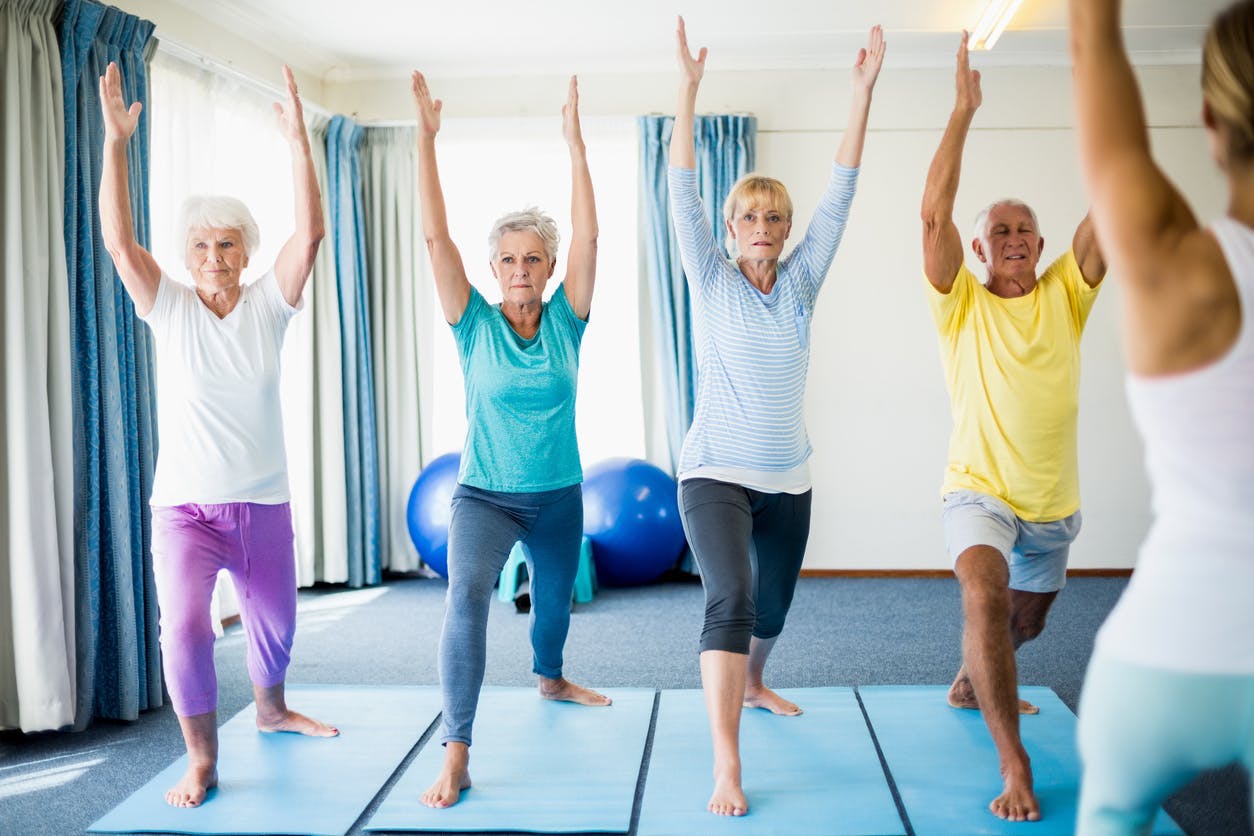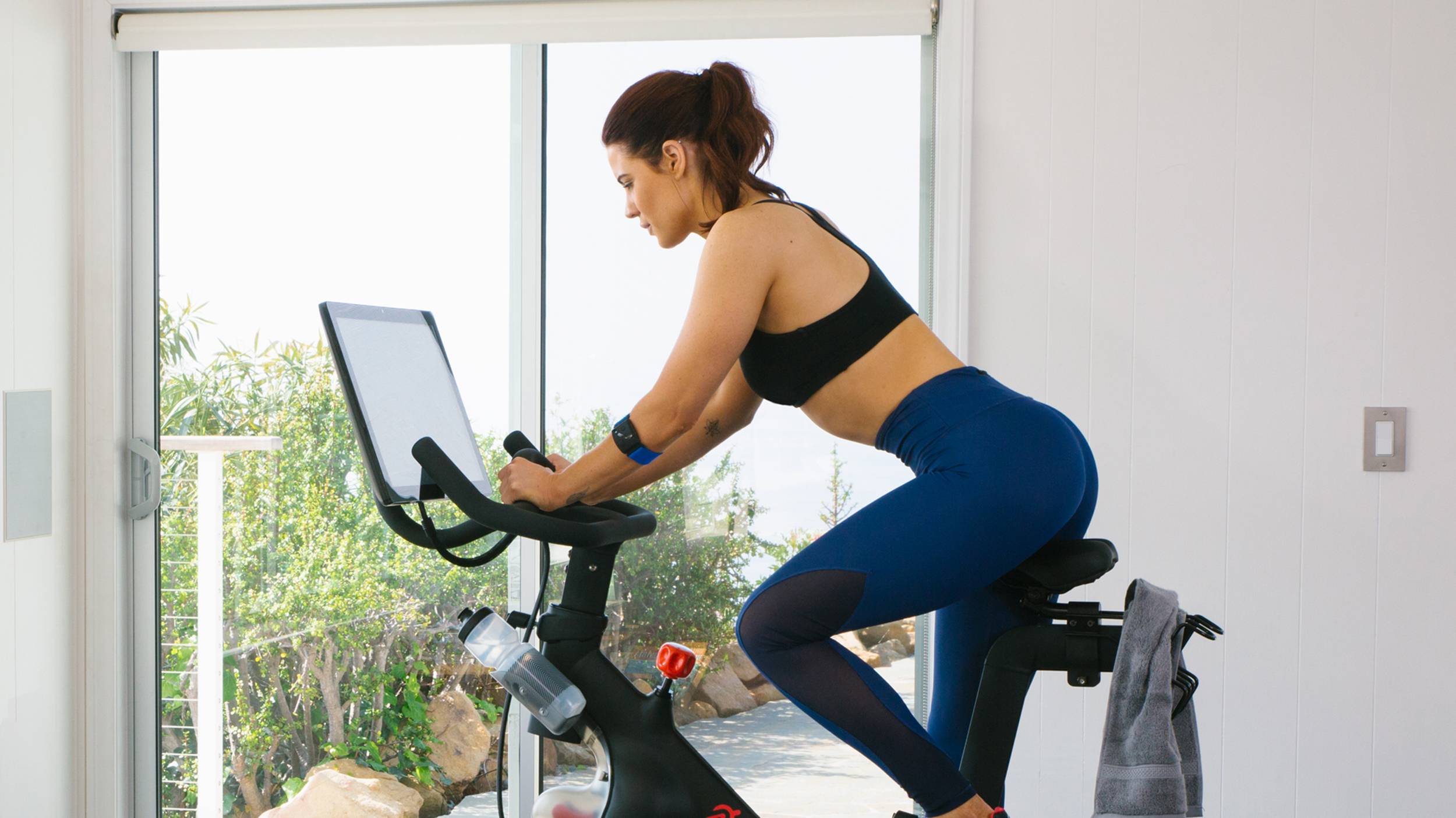
Yoga may be the right choice for you if you are looking for a more challenging and efficient workout than your typical cardio routine. Many people are not happy with yoga's ability to strengthen and stretch muscles. It's possible to be confused if you're just starting to learn about yoga. Some classes are focused on restorative postures that don't increase your heart rate. Others will focus on an aerobic workout, which is still suitable if you want to tone your body and build lean muscle.
For relaxation and prevention of injuries, you can do a routine of yoga after your workout. There are 10 basic poses to start with. You can use a yoga mat, a mat, and a yoga CD to listen to your body and your heart. While these poses are not for everyone, they will give you a better overall workout. They are a great way of increasing flexibility, improving your posture, and to tone and burn fat.

The best way to get a great workout and avoid the stress of working out is by adding a yoga class to your routine. Although you may be tempted combine a yoga session and a gym workout, they should not be done on the same days. Before you begin your workout, it is important to allow at least a few hours. For maximum recovery, try yoga on a rest day if you aren't sure. It's important to keep in mind that you can do both on different days, and you don't have to miss a workout.
Yoga is a great activity that can complement your gym workouts. Additionally, yoga can increase your lifting power and performance. Yoga is great for maintaining your overall health and fitness, regardless of whether you are looking to lose weight or build muscle. It is important to choose an activity which will challenge your body while keeping you fit. There are no rules that say you can't combine a yoga class with a gym session.
A yoga mat is crucial for a good workout. The ideal mat is 4mm thick. It provides cushioning to your joints and muscles. The mat can also help reduce DOMS. This can help you work out more effectively and decrease the pain in your gym. You will feel more balanced and better posture through this exercise. A Yoga class combined with a gym routine is a great way to build strength and flexibility.

Yoga has many benefits. It helps you feel better physically and increases your energy levels. It increases flexibility and balance. The slow, deliberate movements that yoga involves will help improve your balance. You will be more alert to your body's needs and will become more flexible. As a bonus, you will be able to avoid backaches and other ailments associated with back pain. Regular yoga practice will reap the benefits.
FAQ
Why Metabolic Well-being is the Key to Aging Well
People live longer lives than ever before. However, people are getting sicker as they live longer. And while we've made great strides in medical science, it's becoming increasingly clear that our current approach isn't working.
We must change the way that we look at health and aging. We have to start looking at metabolic health - not just weight loss but overall wellness - as the key to healthy aging.
You must ensure your metabolism is strong and healthy throughout your life if you want to lead a long, active life.
There are many options to improve your metabolic health. One of those ways is to incorporate these 7 foods into your diet:
-
Resveratrol in blueberries has been shown to support cell longevity. They are also rich in vitamins C & E and antioxidants.
-
Pinto beans and lentils are great sources of fiber and plant-based proteins. These nutrients help maintain blood sugar levels so they don’t spike and fall.
-
Broccoli's sulforaphane has been shown to protect DNA from damage in research. It might even slow down the progression of cancer.
-
Chia Seeds are high-in omega-3 fatty acids, fiber, and other nutrients. They are high in protein and antioxidants. These nutrients promote gut health, brain function and heart health.
-
Green tea contains catechins, which are polyphenols. Green tea catechins have been shown to reduce bone fractures, heart disease, cognitive decline, diabetes risk, and other health issues.
-
Salmonis rich in vitamin D and low in saturatedfat, salmon is one of the best sources for lean protein.
-
Walnuts have omega-3s and antioxidants such as alphalipoic acid (ALA). ALA aids in energy production and protection against inflammation.
Do Men Need A Gym Membership?
A gym membership does not have to be required for men. A gym membership will make your money more valuable.
Most gyms offer free trial memberships, allowing you to try out the facilities before paying any fees.
You can use the gym whenever you like, and it won't cost anything. It's easy to cancel your membership when you decide whether or not you love the gym.
Do I have to do it every day?
No! Do at least 30 minutes of moderate intensity physical activity five days a week. It means you need to exercise hard enough or walk fast enough that you are slightly out-of- breath.
What is butter good for?
Butter is a great source of saturated fats. This type of fat helps to build stronger bones, healthy skin, and hair.
Butter also contains vitamin K, which prevents bleeding from cuts and bruises. Vitamin K works together with vitamin C to prevent bruising.
Butter also contains minerals like calcium, phosphorous and potassium. These elements encourage stronger bones.
Butter has its limitations. Butter contains high levels of cholesterol. There are studies that show excess cholesterol may increase the likelihood of developing cardiovascular diseases.
Butter also contains high amounts of saturated fat, which contributes to obesity and increases cholesterol.
You can spread butter on bread if you are forced to use it. Bread absorbs more oil than potatoes or pasta.
Is it true to say that protein overeating can lead to kidney stones?
Protein helps maintain healthy bones and tissue. Consuming too much protein can result is calcium excretion via urine. This can lead kidney stones.
It is important that you note that not all people develop kidney stones when they consume more than 2 grams of protein per kg (2.2 pounds). It is possible to eat high levels of protein without developing kidney stones.
Your sodium intake can prevent kidney stone formation. The kidneys regulate the amount of sodium they consume. High levels of sodium are linked to a greater risk of developing renal stones.
If you have kidney stone, you might also consider reducing your protein intake. Protein accounts for about half the daily caloric requirement of most adults. If you cut back on protein, you'll likely lose weight.
If you do decide to eat more protein, don't go overboard. Do not eat more than 20% of your daily calories from protein.
What does milk do for men?
Consider what other uses you might have for your milk next time that you buy it. It may be a good idea to reduce your coffee intake.
Milk has been proven to be beneficial to both children and adults alike. Children get nutrients like vitamin D, calcium and potassium from milk.
It also aids digestion, improves bone strength, and promotes weight gain. The immune system is stronger and there are fewer illnesses in adults who consume dairy products.
The lactose in milk is also high, so people with digestive problems can enjoy the benefits of milk without experiencing stomach discomfort.
Try drinking more milk instead of soda or juice. Drinking milk with more calcium and vitamin A can help to strengthen your teeth.
You can make yogurt with plain low-fat milk if you don't love the taste of milk. Yogurt can be a great substitute for milk, as it has fewer calories and more protein.
Yogurt also contains probiotics, which aid in digestion and improve immunity.
Take a glass warm milk before you go to bed if you are having trouble sleeping. Warm milk relaxes the muscles and increases serotonin levels. It will give you a restful night.
How often should you exercise per week?
It depends on how much time you have available and what type of exercise you prefer. The general rule of thumb is to exercise aerobically 3 - 5 days per week. It's important that you don't overdo it. Consistent exercise is essential to achieving maximum benefit from your workouts.
Which exercises work best for you?
It all depends upon your fitness goals. Some people are more focused on endurance activities such as running, cycling and swimming. Others like lifting weights or using resistance band. There are so many different types of exercise programs available today. Choose an option that suits your lifestyle.
Statistics
- An estimated calorie range for moderately active adult males falls between 2,200 to 2,800 calories per day, depending on age. (eatright.org)
- According to the American Heart Association, blood pressure should be checked at least once every two years, beginning at age 20. (my.clevelandclinic.org)
- By John Thompson Take a whopping 38% off a set of PowerBlock Pros. (menshealth.com)
- Are You One of the 20% of Guys (mh.co.za)
- 10 pounds in a month is likely during a lean bulking phase, especially for beginners. (muscleandstrength.com)
External Links
How To
How can I burn fat and exercise?
Exercise helps you lose calories by increasing your metabolism and oxygen intake.
Moderate intensity exercise is a safe way to lose weight.
To burn fat while exercising, follow these tips:
-
Cardio exercises like walking, running (or jogging), swimming, cycling, running, and/or elliptical training are all good options.
-
Exercise for 30 minutes three times per week.
-
Strength training is a great way to lose weight.
-
Avoid doing intense exercises. You can build muscle without breaking down muscle tissue.
-
Hydrate well during exercise. Water flushes out toxins and helps keep the body hydrated.
-
After exercising, you should drink low-fat protein drinks. Protein shakes can help boost energy and repair muscles.
-
Take smaller meals throughout each day to avoid feeling hungry.
-
Don't skip breakfast! Skipping breakfast can lead to fatigue and sluggishness.
-
Take care of yourself mentally. Stressful situations can slow down metabolism.
-
Keep a positive attitude. Studies show that people who believe they are overweight gain more weight then those who think they are attractive.
-
Get enough sleep. Lack of sleep makes it harder to burn fat.
-
Always be active. Be sure to get up and move around every hour or two.
-
Maintain a healthy diet. Eating right keeps you feeling full and satisfied longer.
-
Find ways to relax. Your body won't release stress hormones that cause muscle tissue destruction if you have a tense mind.
A balanced diet includes all essential nutrients needed for growth and development.
Consider eating six small meals daily instead of three big ones. This gives your body the time it needs to process what you've eat.
To maintain strong bones, you need to consume 500 mg of calcium each day. Calcium is found in dairy products like yogurt, fortified milk beverages, orange juices, cereals and bread.
Calcium is found in leafy vegetables, beans and tofu, as well nuts, seeds and cheese.
Vitamin D is required by the body to absorb calcium. Vitamin D can be found in egg yolk, fatty fish, and other fortified foods.
Vitamin E is vital for your skin's health. Vitamin E can be found in vegetable oils as well as wheat germ oil, peanuts and almonds.
Your body needs zinc for normal immunity function and wound healing. Zinc can be found in seafood, legumes and meats.
Zinc deficiency may cause fatigue, loss appetite, depression, and impaired immunity.
Too much sugar leads to insulin resistance. This results in higher blood glucose levels. Insulin resistance leads to weight gain.
High levels of free radicals can lead to insulin resistance. Free radicals can be molecules with unpaired electrons that cause damage to cell membranes.
The most common sources of free radicals include food additives.
Free radical damage can lead to cancer, heart disease, diabetes, arthritis, asthma, and aging.
To prevent free radical damage, eat a healthy diet rich in antioxidants. Antioxidants protect against oxidative damage.
Vitamin C is found in citrus fruits and beta carotene is found in carrots.
Other antioxidant nutrients include selenium, copper, manganese, and zinc.
Selenium is known to protect cells from the oxidative damage that free radicals can cause. Selenium can also be found in Brazil nuts (tuna), liver, kidneys and shrimp.
Copper protects the brain and eyes as well as the lungs and red blood cells. Copper can be found in meat, shellfish, meat, and organ meats.
Manganese plays an important role in bone structure. Manganese can be found in brown rice and spinach as well as bananas, prunes raisins, oatmeal, lentils, and oatmeal.
Zinc helps with normal growth, reproduction, as well as wound healing. Zn can also be found in white fish, lean cuts of meat, poultry, and eggs.